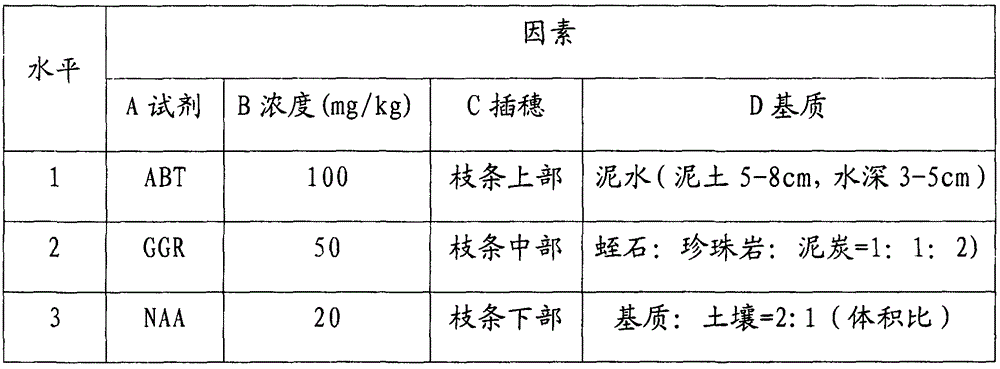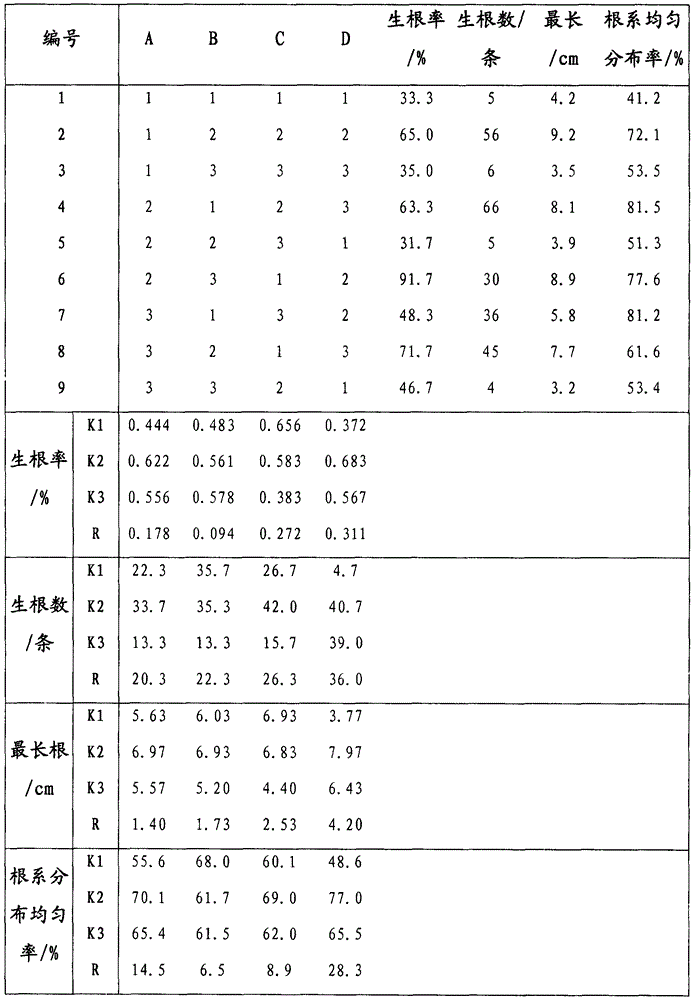Rose red hibiscus cutting propagation technique
A technology of cutting and technology, applied in the field of cutting and breeding of Hibiscus rosea, can solve the problems that the production quantity cannot meet the market demand, restrict the promotion and application, and high management costs, and achieve the effects of reducing cutting and management labor, high survival rate, and simple operation.
- Summary
- Abstract
- Description
- Claims
- Application Information
AI Technical Summary
Problems solved by technology
Method used
Image
Examples
Embodiment Construction
[0021] The present invention will be described below with specific examples. It should be understood that examples are used to illustrate the present invention rather than to limit the present invention, and the scope and core content of the present invention are determined according to the claims.
[0022] The rose red hibiscus cutting propagation technique of the present embodiment comprises the following steps:
[0023] 1) Branch selection: select branches that are born in the current year and free from diseases and insect pests, and the thickness of the branches is 0.4cm;
[0024] 2) Production of cuttings: the cuttings are collected before sunrise in the morning on a sunny day, and the collected branches are placed in a bucket of clear water to keep moisture, and the branches collected from a long distance can be wrapped with a damp cloth to keep moisture; the cuttings are made in a cool place in the lee or indoors ; The specific operation method is:
[0025] A. Cut off ...
PUM
 Login to View More
Login to View More Abstract
Description
Claims
Application Information
 Login to View More
Login to View More - R&D
- Intellectual Property
- Life Sciences
- Materials
- Tech Scout
- Unparalleled Data Quality
- Higher Quality Content
- 60% Fewer Hallucinations
Browse by: Latest US Patents, China's latest patents, Technical Efficacy Thesaurus, Application Domain, Technology Topic, Popular Technical Reports.
© 2025 PatSnap. All rights reserved.Legal|Privacy policy|Modern Slavery Act Transparency Statement|Sitemap|About US| Contact US: help@patsnap.com


